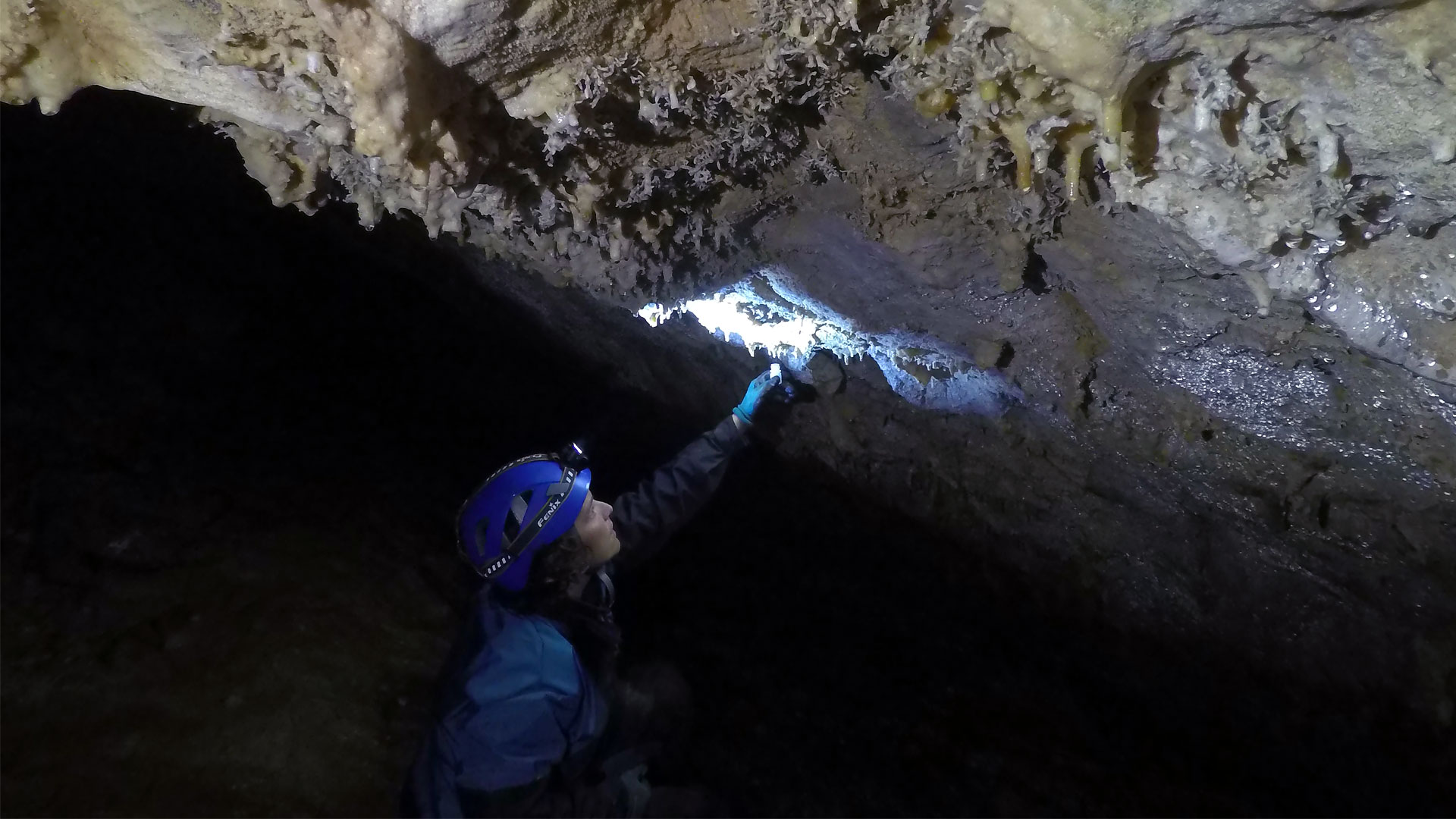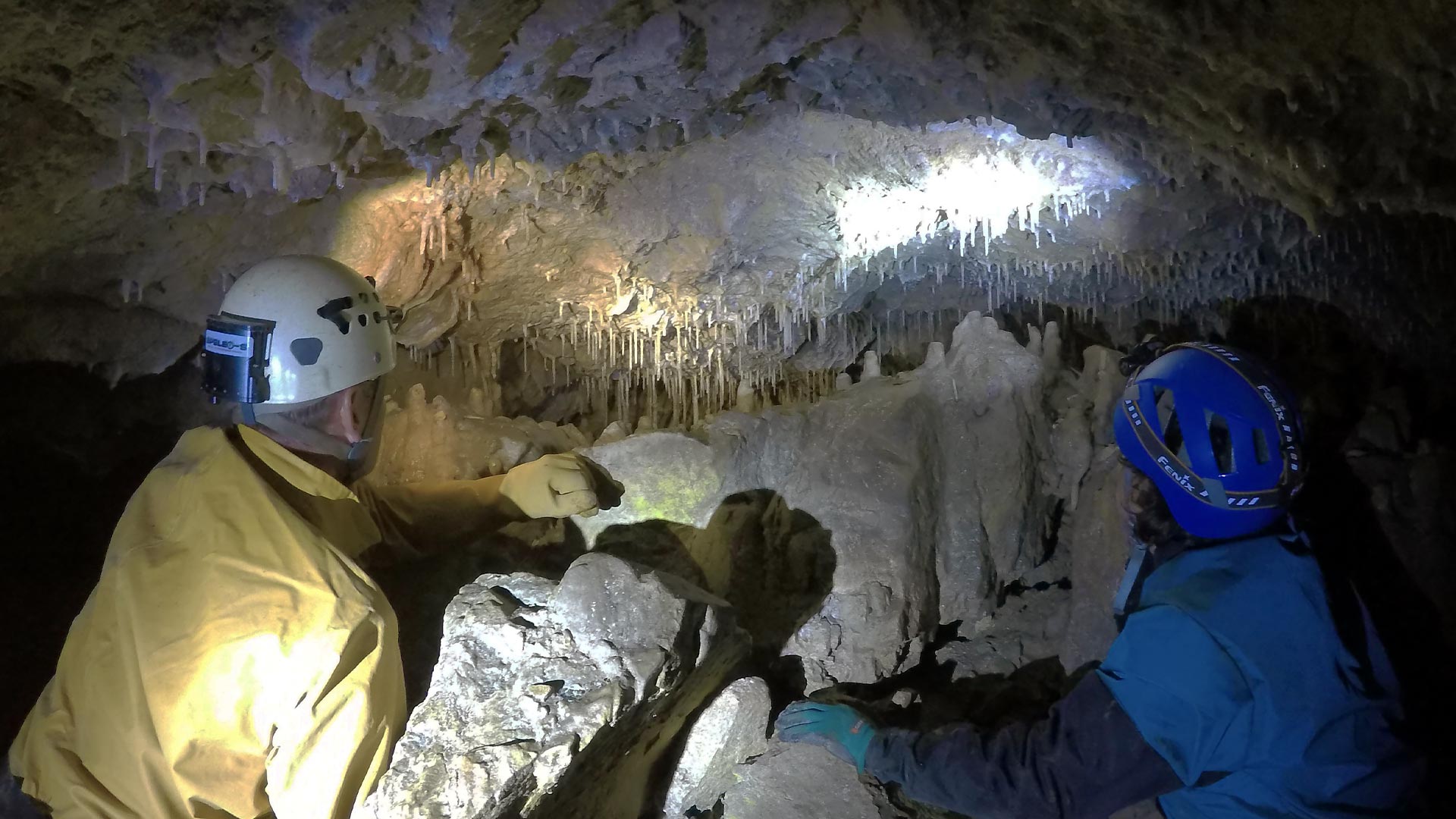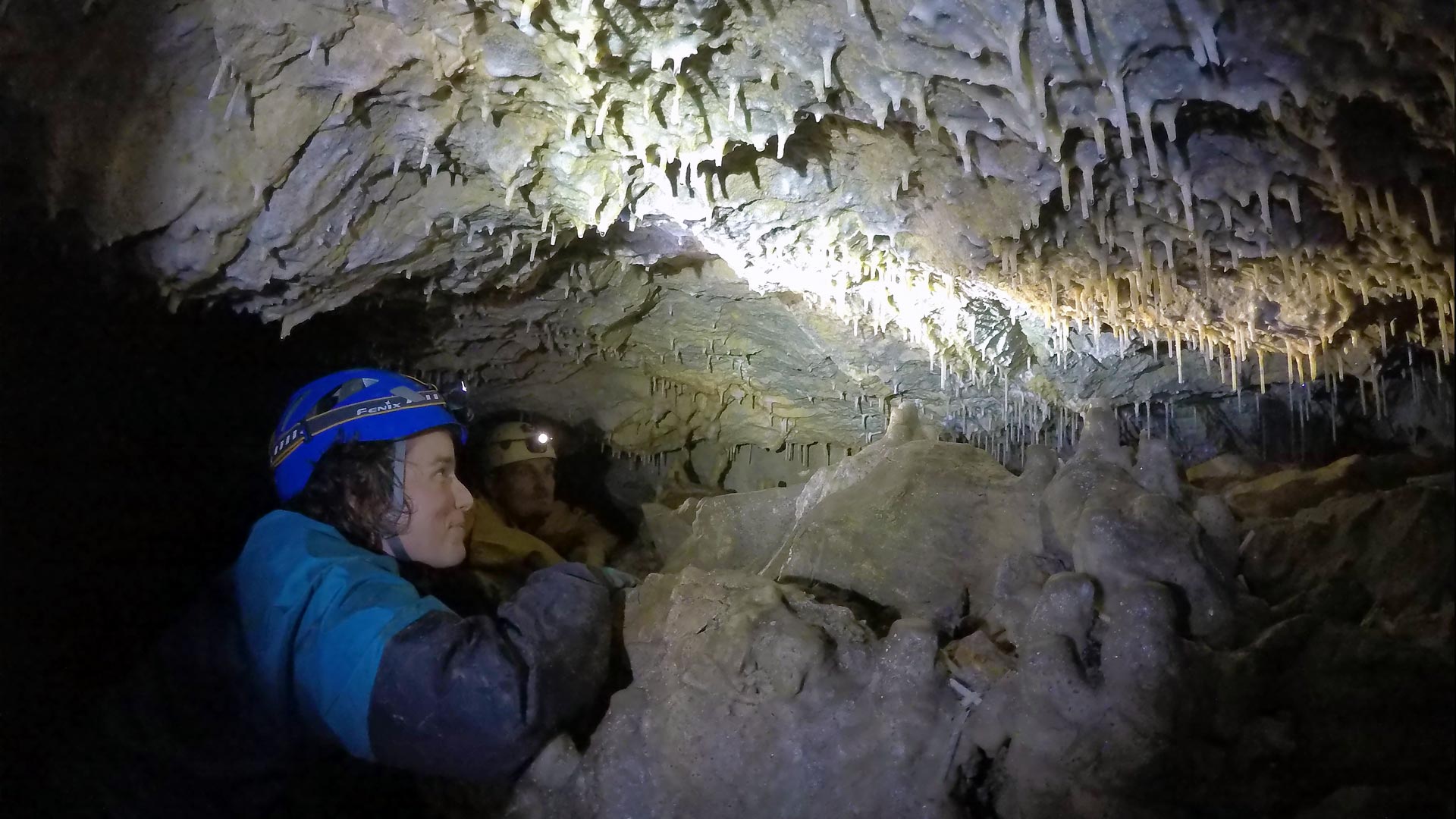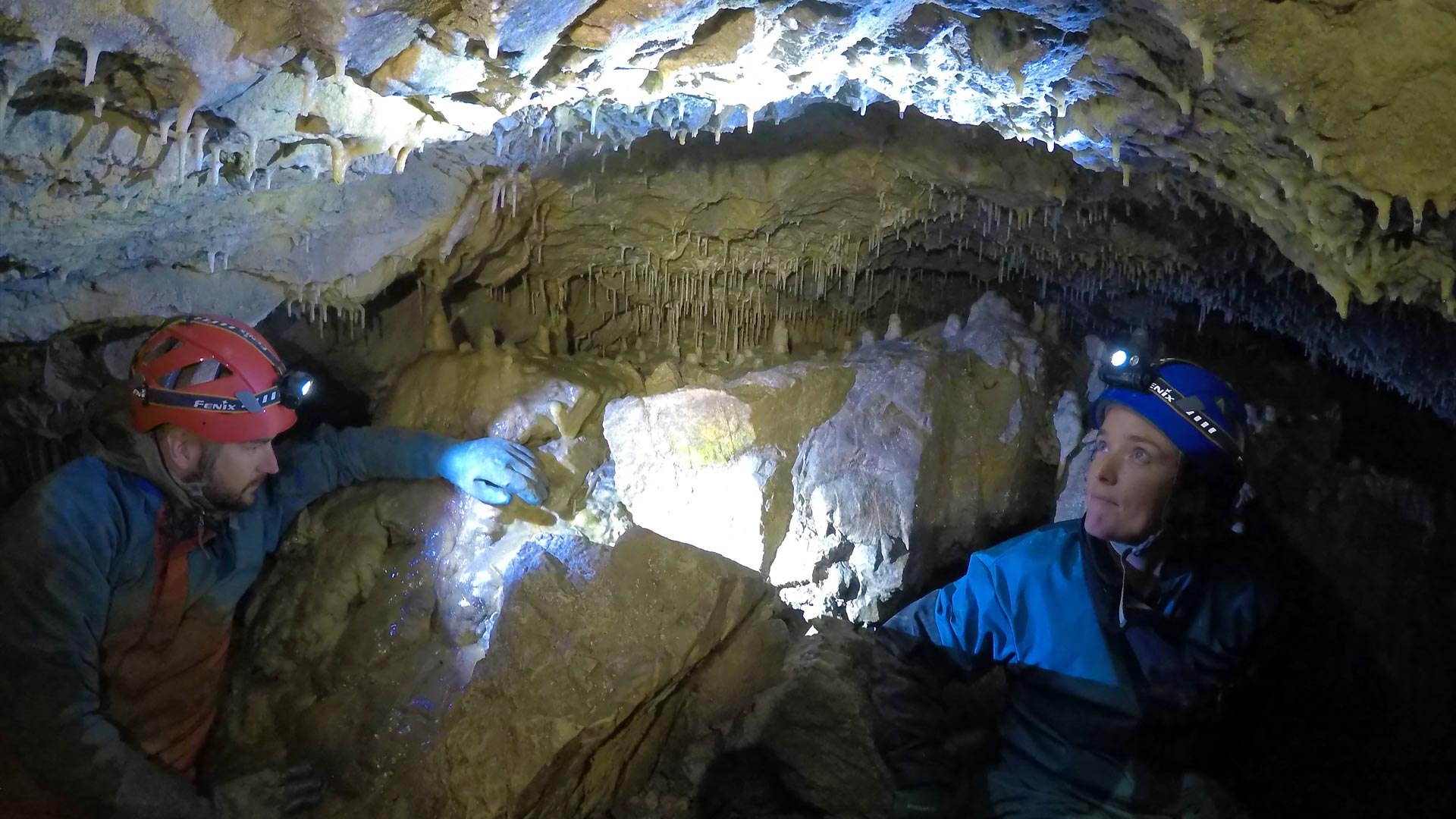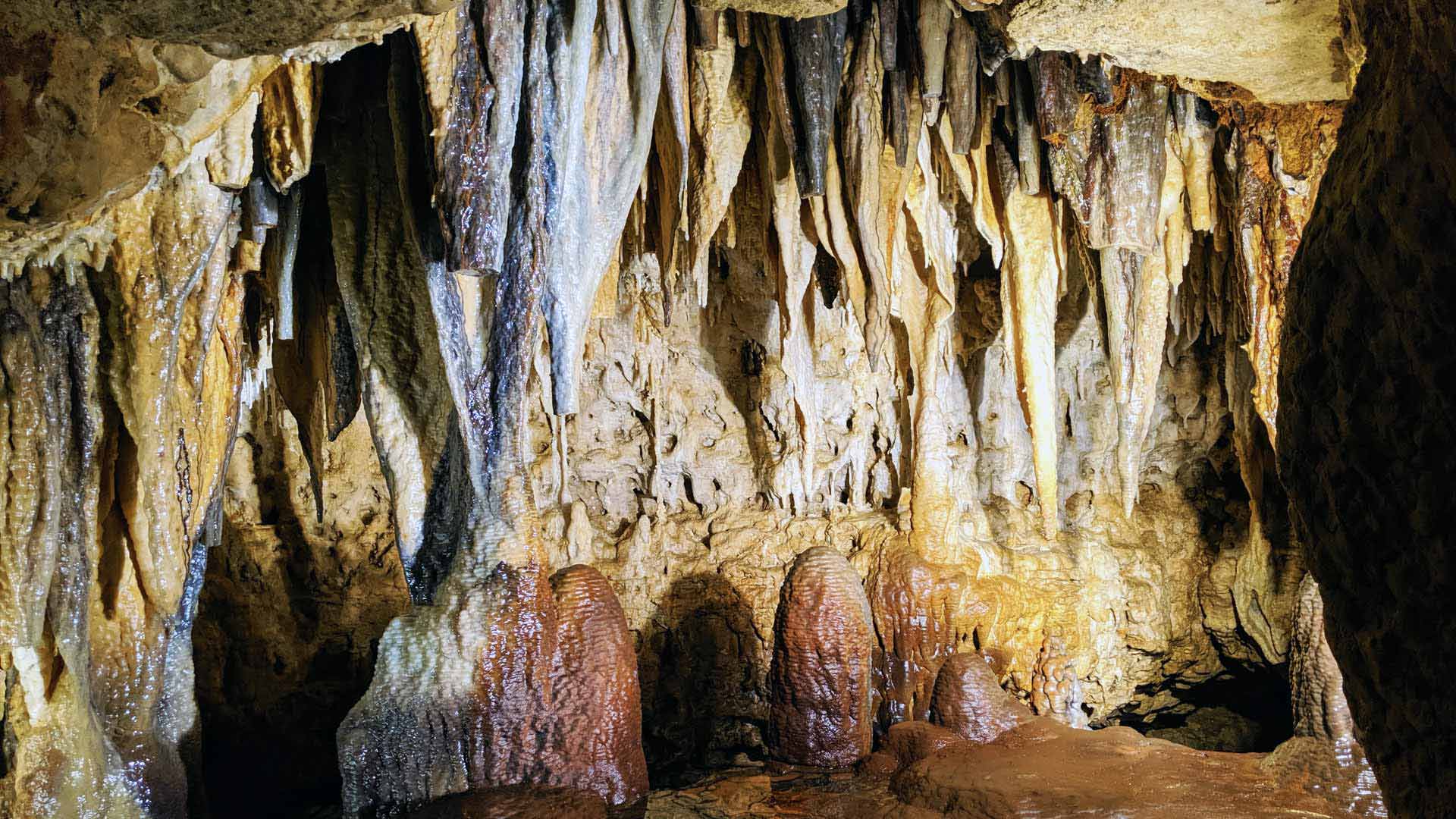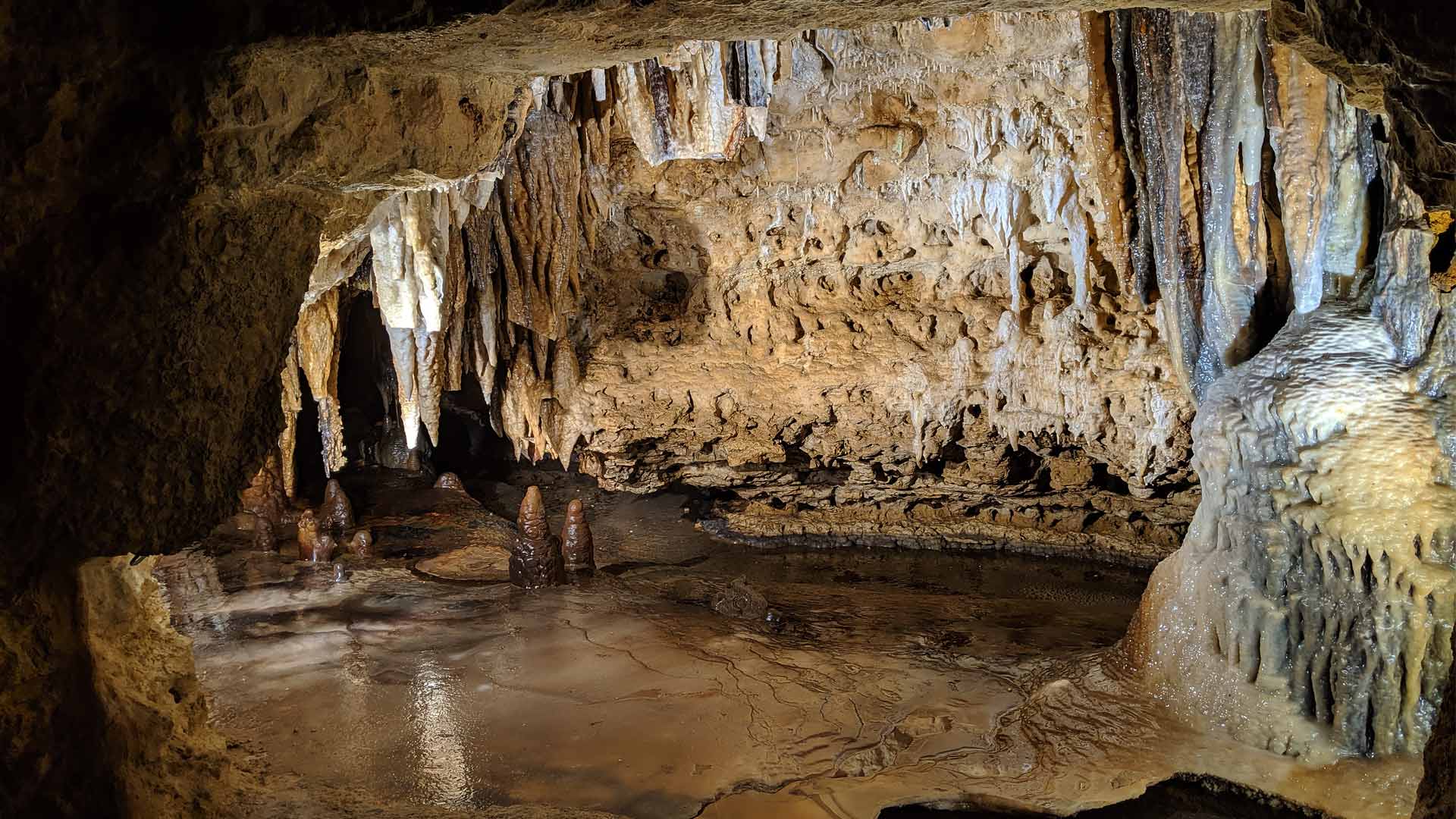Dr Bethany Fox
Senior Lecturer in Geographical Sciences
The expertise of Dr Fox has been sought out to assist a $1 million NZ Dollars SMART ideas research project funded by the New Zealand government, led by the University of Waikato, entitled ‘Quantifying past rainfall and climate extremes in New Zealand’.
THE expertise of a Huddersfield researcher has been sought out to assist an international research project which aims to unlock keys to climate change hidden in cave formations known as speleothems located deep in New Zealand’s caves.
Dr Bethany Fox from the University’s Department of Biological and Geographical Sciences is taking part in a $1 million NZD SMART ideas research project funded by the New Zealand government, led by the University of Waikato, entitled ‘Quantifying past rainfall and climate extremes in New Zealand’.
Speleothems are produced from water outside of the cave dripping slowly through the cave roof over thousands of years. Gradually this deposition of minerals creates cave formations from the ground up, which are known as stalagmites, or from the roof down known as stalactites.
“Because the water has come in from outside of the cave, this means it has a connection to the climate,” explained Dr Fox. “When there is more or less rainfall you can see changes in the chemistry of the stalagmite or the stalactite layer and this can reveal what was happening in the past with the climate of that area.”
Using X-ray Computerised Tomography (XCT)
Dr Fox’s part of the project involves conducting research on the magnetic minerals located within the cave deposits via a process known as X-ray Computerised Tomography (XCT) which Dr Fox will carry out using an X-Ray CT scanner based in the University’s 3M Buckley Innovation Centre. XCT is a non-destructive testing tool that can be used across a wide variety of industries, including medical, electronics, engineering, forensics, ballistics and archaeology.
Dr Fox said the early stages of the project have already led to the researchers uncovering some interesting results, in that the magnetic grains deposited in the cave are much larger than what they would normally expect to find.
“Magnetic minerals have iron in them which is why they are magnetic. This makes them very heavy, very dense compared to most common minerals,” said Dr Fox.
“For these big, heavy mineral grains to have ended up in the speleothem, there must have been a high-energy process that was capable of moving them.”
Predicting past extreme weather events
One possible explanation, she added, is that a past extreme weather event resulted in the cave becoming flooded.
“If we can detect exactly which layers of the speleothem are housing the big magnetic minerals, it could provide us with a nice record of when the cave has been flooded in the past,” she said.
As New Zealand is situated in the South Pacific, where there isn’t a great deal of land, finding out what the local climate was like in the past can be problematic.
Dr Fox revealed this, coupled with the fact that extreme events in the past often prove difficult to investigate because they are of short duration - whereas geological records tend to be produced over a much longer time - is why the site of this particular cave is so interesting.
Geographical Sciences excels in National Student Survey
“To achieve the highest possible score for what is a new course reflects well on course design but most importantly on the commitment of staff to providing an excellent teaching and learning experience.”
Dr Rob Allan, Course Leader of Geographical Sciences and Director of Teaching & Learning within the School of Applied Sciences
As a Senior Lecturer in Geographical Sciences, Dr Fox has been with the programme since its creation three years ago. During that time, she has been working hard alongside her colleagues within the geography team to ensure students receive an excellent teaching and learning experience.
This commitment has now shown dividends after they achieved exceptional scores in the 2021 National Student Survey.
Despite Geography being a relatively new programme of study at the University and the obstacles the team had to overcome as a result of the pandemic, not only were the entire cohort of final year Geography students 100% satisfied with their experience throughout the course, but the programme also scored top marks across the board.
Dr Rob Allan, Course Leader of Geographical Sciences and Director of Teaching & Learning within the School of Applied Sciences said:
“To achieve the highest possible score for what is a new course reflects well on course design but most importantly on the commitment of staff to providing an excellent teaching and learning experience.
“We aim to challenge students to be the best they can be but have support in place to enable them to achieve this goal. Where feasible we deliver material to small groups and try to ensure we develop individual talent. Our aim is to develop critical thinkers who can apply their knowledge and understanding to real word scenarios. Our graduates have worked hard to gain their degrees and staff have been there supporting them all along their journey.”
- This research aligns with three of the United Nations Sustainable Development Goals: 6 - Clean Water and Sanitation, No. 13 – Climate Action and No. 14 – Life Below Water.
More news from the Department of Biological and Geographical Sciences
University News - 0 articles matching your search
University News - 1 article matching your search
University News - {{numberOfPosts}} articles matching your search
- News Story

